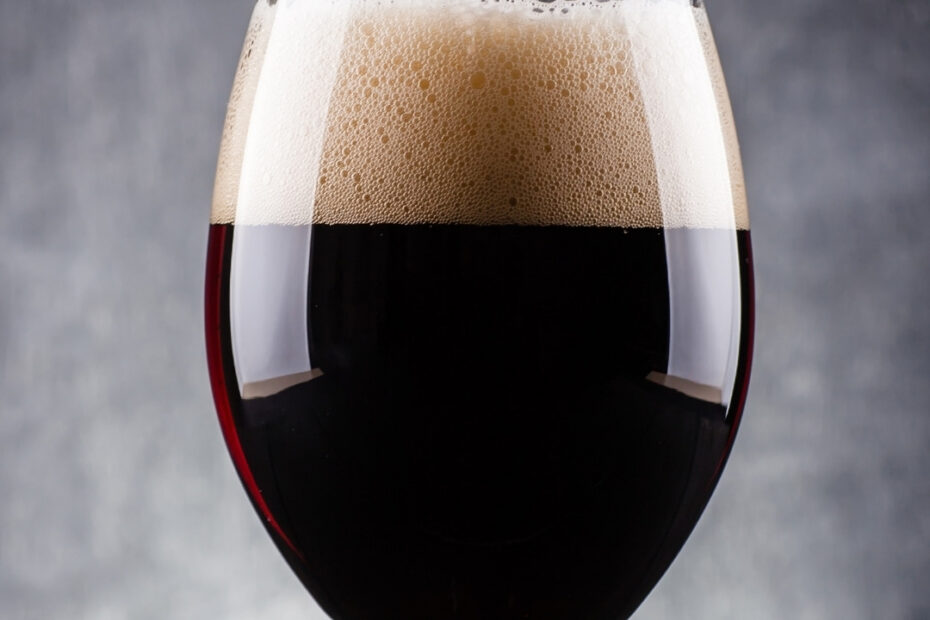The Belgian Quadrupel, also known as the Belgian Dark Strong or Grand Cru, has to be in my top five favorite beer styles. It gives you the warmth and comfort of a well-made stout or porter, especially in the winter months. However, it adds a bit more complexity than these other two styles do. In this article, I’ll go into more detail about the Belgian Quadrupel style as well as present a tried and true BIAB Recipe.
What is a Belgian Quadrupel?
Belgian Quad is short for Belgian Quadrupel, this name is in reference to the Trappist beer naming convention. You may be familiar with the Dubbel (double) or Tripel (triple). The Quadrupel is a stronger and darker beer than the Tripel.
According to the BJCP (Beer Judge Certification Program) style guideline #26D, this beer should be “a dark, complex, very strong Belgian ale with a delicious blend of malt richness, dark fruit flavors, and spicy elements. Complex, rich, smooth and dangerous”.
The complexity of this style stems from not only a more complex than normal grain bill, but also unrefined sugars, and the belgian yeast characters.
Belgian Candi Sugar
The unrefined sugars that are used generally come in the form of Belgian candi sugar. This sugar can come in a solid form or a liquid syrup. Belgian candi sugar is derived from sugar beets and undergoes a Maillard reaction and caramelization. You can find the sugar and syrup products in a range of colors. The lightest being ‘Simplicity’ rated at 0.15L (lovibond) all the way up to the darkest product ‘D-240’ rated at 240L.
You can think of the range of colors similarly to how you think about Crystal/Caramel malt. On the lighter end, you will add sweetness, caramel flavors, and some light toast notes. On the darker end, you will add more stone fruit, coffee, and dark toasted notes. The majority of my experience has been with the D-180 Syrup, which I have had great success adding to both this style as well as stouts.
Belgian Quad Recipe Formation
Hopping should be fairly light on this style, adding just enough Saazer-type hops to balance the strong beer.
As noted earlier, a key part of making this beer is getting the unique characters from the Belgian yeast. As you may know, Belgian yeast can create a variety of fruity esters, spicy phenols, and even some alcohol flavor and aroma. The qualities produced by the yeast play very well with the rich backbone produced by the grain bill of this beer.
I’m guessing the ‘dangerous’ note in the BJCP guideline stems from the fact that when you drink a well-balanced Belgian Dark Strong/Belgian Quad/Grand Cru, it does not feel like you’re putting back a 9-12% ABV beer. The alcohols produced by the yeast are often soft, and the dark fruit notes and malty richness are prominent. In short, the style hides its strength very well.
If you would like to dive deeper into the Belgian style of brewing, I highly recommend the book, ‘Brew Like a Monk’ by Stan Hieronymus.
The recipe that I will present today is for a 2.5 gallon batch. However, it can easily be scaled up or down to fit your needs.
Stats:
Volume: 2.5 gallons
Predicted SRM 50
Predicted IBU 21.61
Original Gravity 1.087
Final Gravity 1.018
ABV- 9.06%
Grain:
6 lb. Pilsen Malt (1.2L)
10oz Crystal (60L)
8oz Melanoidin (25L)
5oz Flaked Wheat
3oz. Special B
2oz Chocolate Malt
3.2 oz. Rice Hulls
Strike water 160F, mash started at 152F
Hops:
0.3oz Tettnanger (45 min)
0.5 oz Hallertau Mittelfruh (30 minutes)
0.5oz Saaz (10 minutes)
Other Additions:
28oz Belgian Candi Syrup D-180 (10 min)
Irish Moss (10 minutes)
Water:
Local Flagstaff Tap Water
1/4 tsp of CaCl
1/4tsp of Gypsum
Mash pH 5.65
3 gallon boil (60 minute boil)
Yeast:
BE-256 1 packet (rehydrated prior to pitching per instructions on packet)
Directions:
Mill the grains and mix with 2.75-3 gallons of 160°F strike water to reach a mash temperature of 152°F. Hold this temperature for 60 minutes. Sparge the grains with 170°F water until you reach a volume of 3 gallons of wort. Boil for 60 minutes, following the hop schedule. Add Irish moss and Belgian Candi Syrup at 10 minutes.
After the boil, chill the wort to slightly below fermentation temperature, about 64°F. Aerate the wort and pitch the yeast. Ferment at 65°F (18°C) for 2-3 weeks, then cold crash the beer to 35°F. Bottle or keg the beer and carbonate to approximately 2.75 volumes of CO2.
If you are interested in more BIAB (Brew in a Bag) recipes like this one, please click here!
As mentioned earlier, if you are looking to learn more about brewing in the Belgian style, check out this book!
